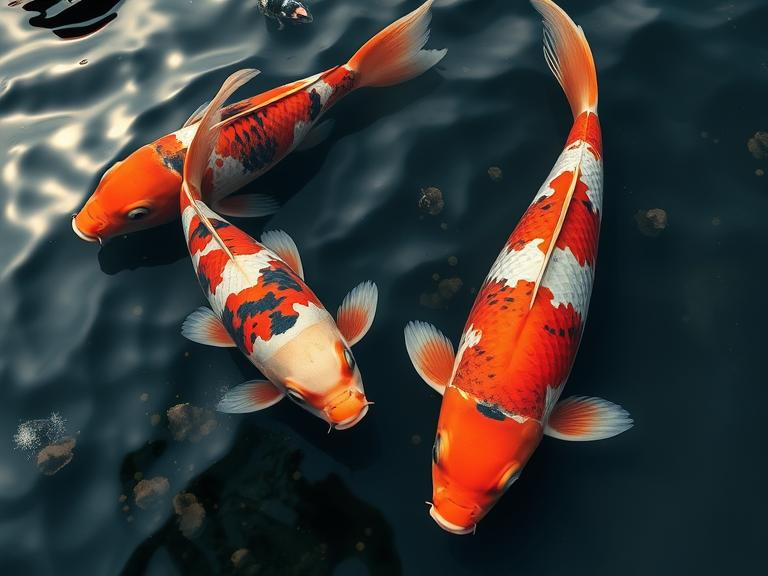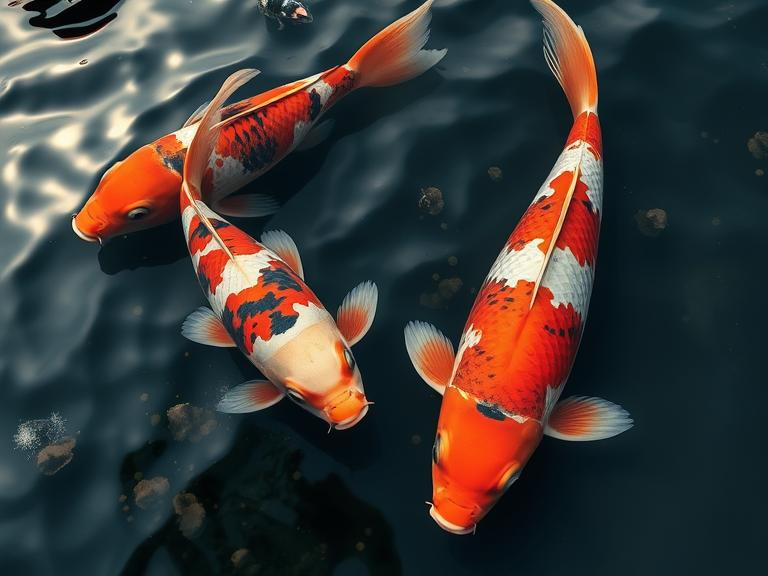
Breeding koi fish is an art form that requires skill, patience, and a deep understanding of the fish’s biology. For those interested in creating the perfect koi, the breeding process can be both challenging and rewarding. Koi breeders aim to produce fish that meet the highest standards of color, pattern, and form, with each generation being an improvement upon the last.
The Breeding Process
The breeding of koi fish involves selecting two parent koi with desirable traits and allowing them to mate. The goal is to combine the best qualities of both parents to produce offspring that inherit their vibrant colors, intricate patterns, and strong genetics. Koi breeders often use controlled environments to monitor and influence the breeding process, ensuring the best possible outcomes.
Breeding koi requires a thorough understanding of the different color strains, patterns, and body shapes that make a koi desirable. In Japan, koi breeders have been perfecting their techniques for centuries, and their expertise has led to the development of some of the most stunning koi specimens in the world.
Selective Breeding for Quality
One of the key aspects of koi breeding is selective breeding, where breeders carefully choose the parent koi based on their characteristics. This practice allows breeders to enhance specific traits, such as the intensity of colors, the clarity of the skin, and the shape of the body. By selectively breeding koi over multiple generations, breeders can create fish that are visually striking and highly valuable.
Some of the most sought-after color varieties include the bright red Kohaku, the deep black Showa, and the gold and white Utsuri. Each of these types requires careful attention to detail during the breeding process to achieve the perfect color and pattern combinations.
The Role of Water Quality in Breeding
Water quality plays a critical role in the breeding and health of koi fish. For koi to thrive and reproduce successfully, the water must be kept clean and at the proper temperature. The ideal breeding environment for koi is a pond with stable water conditions and adequate filtration. Water temperature is especially important, as koi breeding typically occurs in the spring when the water temperature rises to around 18°C to 22°C (64°F to 72°F).
A proper filtration system ensures that the water remains clean, free from toxins, and rich in oxygen, all of which are essential for the well-being of the koi and their offspring.
The Value of Koi in the Market
High-quality koi are highly valued in the ornamental fish market. Some koi can fetch astronomical prices, especially those with rare colors or perfect patterns. Koi auctions in Japan are famous for selling koi at incredibly high prices, with some specimens being sold for over a million dollars.
However, koi breeding is not just about monetary value; it is also a passion for many breeders who are dedicated to improving the quality of their koi year after year. For serious koi enthusiasts, the pursuit of the perfect koi is a lifelong endeavor that combines artistry with science.
Conclusion
Breeding koi fish is a complex and rewarding endeavor that requires a deep understanding of the fish’s biology, genetics, and environmental needs. With patience and expertise, koi breeders can create beautiful and healthy fish that meet the highest standards. For those passionate about koi, breeding them is not just a hobby—it’s a way to create living works of art that are admired by enthusiasts worldwide.

